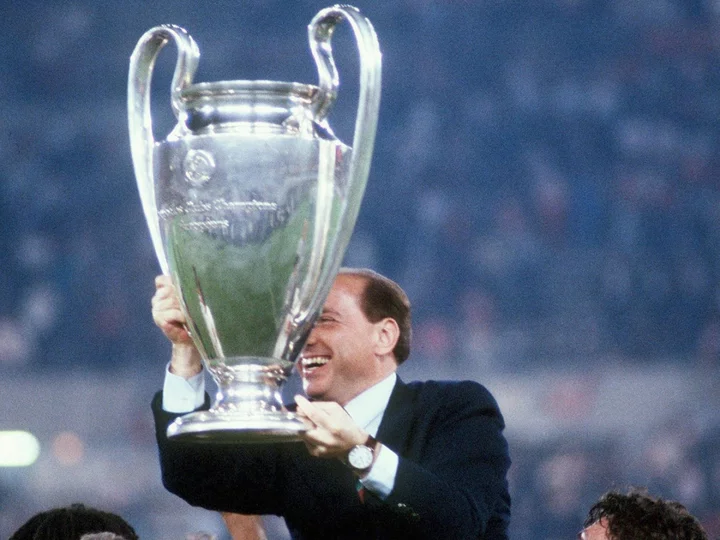
The story of Silvio Berlusconi and the birth of the Champions League
A version of this story was published in February 2017 Diego Maradona was one of many players struck by the strange “uniqueness” of the occasion. He wasn’t to know the half of it. Because, the last and only other time that Napoli travelled to Real Madrid - back in the 1987-88 European Cup - it involved a hugely bad-tempered game that also saw a manager call a player a “mafioso” and took place in front of no fans and in an odd silence, due to crowd trouble the previous season from Real’s infamous Ultrasurs. It was hardly the setting for such a highly anticipated match between two heavyweights, not to mention the meeting of one of the greatest players ever and the most successful European Cup club ever. All of that will likely get replayed in the build-up to Napoli’s return to the Bernabeu on Wednesday, but none of it is what really makes that 1987 match unique. This was actually the game that changed European football. AC Milan owner Silvio Berlusconi was one of many watching, but he couldn’t share in the excitement around the fixture. He was aghast at the fact that two clubs like that could meet as early as the first round of the competition, as was happening here. It was hardly the stage to waste such a highly anticipated clash, or to waste one of the sides that would be eliminated but instead should have been making the competition all the more enticing later on. Berlusconi naturally feared the same could happen to his own club, but also had wider concerns. So, he set in motion his plans for a European super league. That didn’t happen, but the idea - and the threat - directly led to the creation of the Champions League, and the super-club-dominated era we have today. It is also a situation with several levels of irony. What is only the second ever tie between Real and Napoli is now seen as a novelty in a last-16 stage that has meetings of Barcelona-PSG and Arsenal-Bayern Munich both being replayed for the fourth time in just five years, a level of repetition that has dulled some of the Champions League’s intrigue and mystique. It was exactly the intrigue and a mystique of a rarely-played fixture coming in the competition’s old opening knock-out round, however, that led to that. What’s more, this growth of the Champions League has someway cannibalised some of those who were initially so behind super league ideas - from Rangers in Scotland to Liverpool and even Milan themselves. It’s certainly difficult not to wonder what Berlusconi now thinks about Milan’s meek drift away from the glamorous competition he helped create. You don’t have to wonder what Real and Napoli thought on being drawn against each other so early in 1987, though. They were stunned. Part of the reason was that the first-time Italian champions had no European pedigree, so were unseeded. Real’s pedigree was emphasised by the fact this was their 100th European Cup match at the Bernabeu, making it all the more incongruous that it would take place in front of the stadium’s empty stands. A two-game closed-doors order was the price for crowd trouble in the previous season’s semi-final against Bayern Munich. It was probably oddly fitting that the match that would prove so transformative for the quality, glamour and scope of the competition, however, was a poor game played in front of nobody. Described by Mundo Deportivo at the time as a “cold” occasion where the players were “orphaned” on the pitch, it did heat up between the teams. Both squads probably took Maradona’s demand to “go and batter them!” a bit too literally. Many kicks and apparently punches were traded, a bag of ice was thrown at Real manager Leo Beenhakker, and Napoli’s Salvatore Bagni later claimed the Dutch coach and some of his players had called him “mafioso”. Beenhakker did apologise for that before the second leg, again citing the “unique” circumstances of the game, but from the vantage point of a 2-0 victory. The goals summed up the level of performance. Michel scored from a penalty, Fernando De Napoli was responsible for an own goal, all to the sound of silence. Returning to Spain for the first since leaving Barcelona in 1984, Maradona had been marked out of the game, and blamed Napoli’s poor display on the pressure of a first appearance in the competition. “You don’t have to exaggerate,” he said. “We did not see the true Napoli, perhaps because of the responsibility of a debut in the European Cup.” It was exactly this kind of quirk, however, that so concerned Berlusconi. He just couldn’t see the logic in the competition’s best - and most televisually lucrative - teams potentially going out because of one bad night, one stroke of bad luck. It was precisely this Berlusconi feared for Milan, as he admitted in what would prove a hugely prescient interview with World Soccer in 1991. Amid predictions about the decline of international football and how European Union regulations would completely condition the continental game, the mogul came out with the following: “The European Cup has become a historical anachronism. It is economic nonsense that a club such as Milan might be eliminated in the first round. It is not modern thinking.” Berlusconi had shown a lot of very modern thinking, particularly by football’s conservative standards, since taking over Milan in 1986. Though always a fan of the club, he saw them as one arm of his business empire. Berlusconi made little secret of his plans to use both the Rossoneri brand and his media company Mediaset together to maximise both. Having already revolutionised broadcasting in Italy with the way his innovative approach to regional stations evolved into the country’s first national private TV station in Canale 5, he had similar plans for football. Berlusconi felt the sport was utterly wasting its potential in this area, and not at all reaching a potential pay-TV audience of millions and beyond. He thought it absurd that the biggest clubs in a sport that involved so many popular stadium events were not regularly meeting in glamorously lucrative matches. Martin Schoots is now a prominent European agent representing players such as Christian Eriksen, but was then a journalist primarily covering the three Dutch stars at Milan - Marco van Basten, Ruud Gullit and Frank Rijkaard - and was always impressed with Berlusconi’s approach when they met. “He was a visionary,” Schoots says,” and very clear and convinced about what developments would come. His philosophy was that football was a spectacle.” Or, as was put by some of those close to Berlusconi, “the television spectacular world-wide” - and the potential audience for his Canale 5. Making the European Cup a super league was not quite a new idea, though. That had actually been creator Gabriel Hanot’s initial plan for the competition in 1955 in order to better reflect “rightful” champions than the nuances of knock-out football, but proved impractical with the travel and communication of the time. Liverpool had also come up with a discussion document suggesting mini-leagues in 1978, around the time they were drawn against Nottingham Forest in the first round, and that had been revived in 1984. No-one, however, had gone for it with the same force or sense of structure to it as Berlusconi. this Super League was based on merit, tradition and television - and therefore it was a league for big television markets Alex Flynn After initial moves with Real president Ramon Mendoza were rejected, the Italian businessman decided to commission a blueprint for a ‘European Television League’ in 1988. The man who ended up with that commission was Alex Fynn, then of Saatchi and Saatchi. A huge football supporter, Fynn had already given a talk at an event for the Rothman’s Football Yearbook called a ’10-point blueprint for football’, suggesting exactly a European super league. It was subsequently printed in the Times, and word got around. “A few weeks later, I got a call from the head of our Italian agency,” Fynn tells The Independent now. “He said ‘here’s the job you always wanted: design a super league for Berlusconi.’ And the reaction? “My reaction? My reaction was my head was turned, I was flattered, and I did what I thought he wanted - not necessarily what football needed. So this Super League was based on merit, tradition and television - and therefore it was a league for big television markets. I think it had a league of about 18 clubs and certainly two each from England, Italy, Spain… that was the plan.” It was a plan initially rejected by Uefa, but had still done its job. The idea was out there, as was the underlying threat of a possible breakaway and possible changes were now on the table. “He decided to publicise it and use it as a stalking horse and catalyst to support his argument,” Fynn says of Berlusconi. “I think it went further than that. When someone like Berlusconi has a plan for a breakaway European super league, even Uefa had to sit up and take notice. The underlying threat was this businessman might have the wherewithal to do what he says. In theory, breakaways aren’t tangible, because they need the sanctioning of Uefa and Fifa. So maybe he realised that and maybe all he was doing was to produce the plan to affect some sort of change that would benefit his club and his commercial business - which of course it did.” Uefa fundamentally realised the dilemma between trying to keep the big clubs happy and keeping their structures intact, and thereby had to strike a balance, setting a dynamic that would lead to the current situation - but keep tilting one way. In the autumn of 1991, at an extraordinary Uefa congress, the then 35 members voted in new proposals, this time primarily put drawn up by Mendoza and former Rangers secretary Campbell Ogilvie. The quarter-finals would be replaced by a group stage, and league systems would be part of the competition for the first time. Even more important than that structural change, though, Uefa contracted the marketing company TEAM to sell it. The competition would the next season become the Champions League - to create what Fynn describes one of international sport’s two “supreme branded events” along with the NFL, right down to the distinctive classical anthem - an exclusive ‘family’ of corporate sponsors were signed up, and TV packages would be sold to the highest bidder, based on market share. Big clubs from the leagues with the largest TV markets would earn more and more money, accumulating more and more political capital Crucially, Berlusconi’s broadcasting model had properly permeated club football for the first time. The European game’s governing body had adopted many of its principles, as would the Premier League and many of the continents major clubs, bringing huge finances into the game - but also greater disparities than ever before. Big clubs from the leagues with the largest TV markets would naturally earn more and more money, accumulating more and more political capital, to the point more and more changes to the Champions League were inevitable. Finally, with two of this week’s fixtures offering the clearest examples in Barca-PSG and Arsenal-Bayern, we have the regular “television spectaculars” Berlusconi so envisaged. He probably didn’t envisage them, however, without Milan. That team he created, however, might still be the most influential in history. Because, just as they were changing football on the pitch with Arrigo Sacchi’s tactical ideas, the club were also changing football off it through Berlusconi’s economic ideas. And, if it was fitting that the first leg of the Real-Napoli tie was so off-putting given the change that would follow, it was equally fitting the return would give a sign of what was to come; what was capable - both in terms of the event, and the takings. This truly was the “television spectacular” Berlusconi desired. In front of a raucous 82,231 crowd at Napoli’s San Paolo stadium, and with Brazilian star Careca back in the team after injury, the revenge-driven home side finally did what Maradona demanded and “battered” Real in the right way. If only for 44 enticingly intense minutes. That Real team never got beyond the semi-finals, and were the very next season hammered 5-0 by Milan in a historic landmark of a game Defender Giovanni Francini had set the occasion alight by making it 2-1 after just after the half-hour, and Napoli could have added many more before Careca - of all people - missed a fine chance on 40. Within four minutes, Emilio Butragueno had scored the decisive goal. Real were through. If history regularly repeats itself, it’s interesting how so many of the same debates do, too. In the aftermath of that game, Maradona’s European pedigree was questioned, while Butragueno’s clinical brilliance was widely praised. Neither would actually end up winning the European Cup, as that Real team never got beyond the semi-finals, and were the very next season hammered 5-0 by Milan in a historic landmark of a game. At the time, though, Real were convinced they were on the brink. They even celebrated that victory in an unusually ostentatious manner. Beenhakker was remarkably moved to declare a mere first-round win - for a club that had then won the competition six times - as “a result for history”. It was to prove exactly that, but not in the way he imagined. The future could already be imagined from Napoli’s earnings from the game. They received 10,000 million lira due to both ticket and television sales, estimated at that point to be a world record. The die had been cast - and is still rolling. The Champions League continues to gradually change according to the preferences of big clubs, if at a somewhat glacial pace. “The big clubs never have enough money,” Fynn says. “That’s why you can never satisfy them, whatever changes you make.” Right now, what generally happens is that we see a lot of the same clubs, and a lot of the same fixtures in the latter stages of the competition - to the point Real and Napoli is again a novelty. It is thereby a fixture that will forever remain unique. Read More Pep’s future and Premier League charges – Where next for Man City after treble? How Pep Guardiola can become the undisputed greatest manager Man City fans feel let down by Uefa’s ‘shambolic’ organisation of Istanbul final Football rumours: Wilfried Zaha eyes move to Paris St Germain The sporting weekend in pictures Pretty Woman makes Pep Guardiola’s day as Julia Roberts hails Man City champions
2023-06-12 18:59
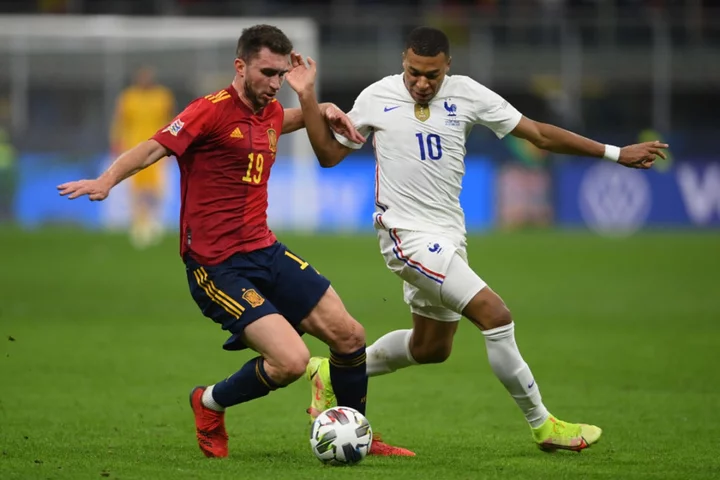
When are the Uefa Nations League finals, who is playing and how to watch?
While much of the home nations’ focus this week will be on Euro 2024 qualifying, the finals of the 2023 Uefa Nations League are also being held. It means we’ll have a successor to France as champions of the tournament, which this year saw England and Wales both relegated from League A and Scotland promoted from League B. Republic of Ireland and Northern Ireland remain in Groups B and C respectively. Here’s everything you need to know about the finals, who is involved and how to watch across the week, including Sunday’s grand final. Who is playing in the Nations League finals? The four nations involved in the finals are Netherlands, Spain, Italy and Croatia . Netherlands are hosts; the games are being played in De Kuip, Rotterdam, and De Grolsche Veste, Enschede. What are the fixtures and when are they? In the semi-finals, Netherlands play Croatia at 7:45pm BST on Wednesday 14 June. One day later at the same time, Spain play Italy. The losers of each semi will play each other in the third-place play-off at 2pm on Sunday 18 June, with the winners meeting in the final on the same day at 7:45pm. Where can I watch? Both the semi-finals will be screened on Viaplay Sports 1, as well as the third-place play-off. The final will be on Viaplay Sport 1 and Channel 4, and can be streamed via the All 4 app. All Viaplay matches can be watched via the website and app. How does the Nations League impact Euro 2024 qualifying? There is no automatic qualification for Euro 2024 by winning the 2023 Nations League. However, with two places available in each group through qualifying it is unlikely any of the quartet will miss out in any case. In the event they do finish outside the top two in their Euro 2024 qualifying groups, the six best-performing nations in the Nations League will be handed play-off spots for a last shot at reaching the Euros. Odds Netherlands 21/20 - Draw 12/5 - Croatia 32/11 Spain 13/10 - Draw 9/4 - Italy 41/17 Overall winner: Netherlands 9/4 Italy 7/2 Croatia 9/2 Spain 11/2 Read More Tottenham progressing in bid to sign Brentford goalkeeper David Raya Jarrod Bowen: From Hereford and Hull to West Ham’s humble European hero Soccer Aid 2023: England vs World XI result, final score and reaction Soccer Aid 2023: England vs World XI result, final score and reaction Toney compares ban to missing out on World Cup squad How Pep Guardiola can become the undisputed greatest manager
2023-06-12 18:56
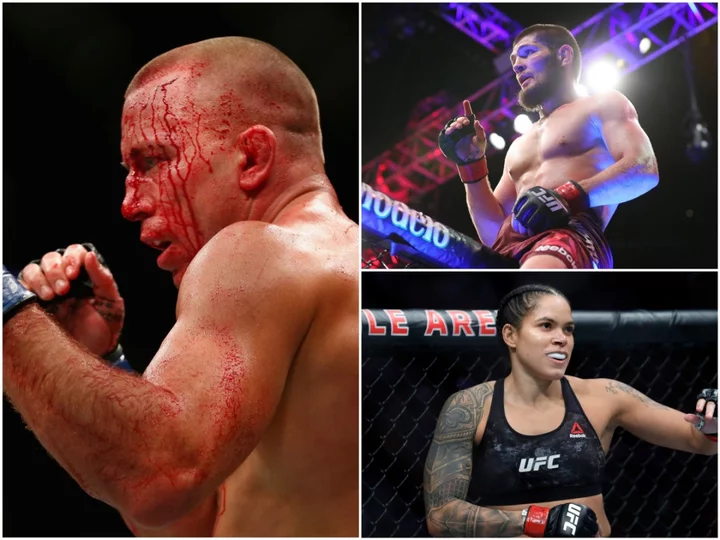
The best UFC fighters of all time ranked
Heavyweight Stipe Miocic (20-4; 15 knockouts/TKOs, 5 decisions) Former two-time champion Miocic holds the record for the most consecutive successful defences of the UFC heavyweight title, in a division where the belt is frequently passed around. The American won the title by knocking out Brazil’s Fabrico Werdum in hostile territory in 2016, going on to record stoppage victories over Alistair Overeem and Junior dos Santos before outpointing Francis Ngannou with a wrestling masterclass. Miocic then dropped the belt to Daniel Cormier with a knockout loss later in 2018, but the part-time firefighter regained the gold with his own stoppage of his compatriot one year later. The pair rounded out their trilogy in the summer of 2020, when Miocic beat Cormier on points to retain the title. In his most recent bout, in March 2021, Miocic was knocked out by old foe Ngannou to lose the belt for the second time, though that result said more about Ngannou’s improvements than any waning of Miocic’s skills. Although the versatile American is now 40, heavyweights tend to fight later into their lives than most mixed martial artists, and he could now be set for a showdown with the next man on this list... Light-heavyweight Jon Jones (27-1, 1 No Contest; 10 KO/TKOs, 7 submissions, 10 decisions) This passage is written with great reluctance, on account of Jones having tested positive for performance-enhancing drugs numerous times – as well as having been charged with and found guilty of numerous offences outside of the Octagon. The problem is, if the greatest light-heavyweight of all time is not Jones, you have to start making cases for fighters whose resumes just don’t come anywhere close to the American’s. Jones became the youngest champion in UFC history at 23 years old (a record yet to be broken) by winning the title with a stoppage of Mauricio Rua in 2011. That win took Jones’ UFC record to 7-1 – with his sole loss having come via an unfortunate disqualification – and “Bones” only improved his standing by running through a ‘who’s who’ at 205lbs. Jones retained the light-heavyweight title against Quinton “Rampage” Jackson, Lyoto Machida, Rashad Evans, Vitor Belfort, Chael Sonnen, Alexander Gustafsson, Daniel Cormier and Glover Teixeira. Almost all of those men had previously held titles in the UFC, and the latter two eventually did. In the time since that run, Jones’ transgressions outside of the ring and with performance-enhancing drugs have seen him stripped of the light-heavyweight title twice and interim belt once – as well as seeing a second win against Cormier overturned to a No Contest. His third reign as champion brought a second victory over Gustafsson and a dominant win against Anthony Smith but also controversial decision victories over Dominick Reyes and Thiago Santos. Jones relinquished the belt after his successful defence against Reyes in 2020, teasing a move up to heavyweight. That move finally came this March, as Jones submitted Ciryl Gane to win the vacant belt in the first round. Jones, 35, is seen by many as the most naturally-talented fighter in UFC history and a combatant with almost unrivalled ring IQ. Unfortunately we may never know how natural his talents really are. Middleweight Anderson Silva (34-11, 1 NC; 23 KO/TKOs, 3 submissions, 8 decisions) Like Jones, though not to the same extent, Silva’s legacy has been tainted by failed drugs tests, and the Brazilian is not quite as far ahead of the middleweight pack as “Bones” is at light-heavyweight. Recent 185lbs champion Israel Adesanya, who has a victory over Silva, had been staking an increasingly sharp claim to be regarded as the best ever in the division prior to a title loss to Alex Pereira, but his hero’s own argument stands on strong foundations built over a long period of time. Silva won the UFC middleweight title with a game-changing performance in 2006, devastating Rich Franklin in the Thai clinch to secure a stoppage within three minutes and begin a seven-year reign, which included 14 successful title defences in a row. Both the length of time and number of successful defences remain UFC records to this day. Silva’s title loss to Chris Weidman in 2013 marked the start of a nine-fight run in which Silva recorded one win, one No Contest and seven defeats. He has not fought since the most recent of those results – a stoppage loss to Uriah Hall in 2020 – and at 48 years old is unlikely to compete in MMA again. However, he has already boxed professionally since then, at one point impressively outpointing former WBC middleweight boxing champion Julio Cesar Chavez Jr – who is nine years Silva’s junior. Welterweight Georges St-Pierre (26-2; 8 KO/TKOs, 6 submissions, 12 decisions) St-Pierre is in a similar position to Silva in as much as he has long been the consensus GOAT in his division. Unlike Silva, however, there are no indiscretions to count against GSP. He was a model mixed martial artist and is seemingly a model human being. The Canadian embodies the value of respect that has always been a core component of martial arts, and his game was as well-rounded as any in the history of the sport. St-Pierre, now 41, also avenged the only defeats of his professional MMA career, beating Matt Hughes in a rematch to win the welterweight title in 2006, then overcoming Matt Serra in 2008 to reclaim the belt after losing it to the American in what is widely seen as the biggest upset in UFC history. St-Pierre left the sport in 2013 after a controversial points victory over Johny Hendricks, but the wrestling specialist returned in 2017 to beat Michael Bisping for the middleweight title – thus joining a small group of two-weight UFC champions. The Canadian has resisted the temptation to return to MMA, wisely preserving his almost faultless legacy as the consensus GOAT in the sport. Lightweight Khabib Nurmagomedov (29-0; 8 KO/TKOs, 11 submissions, 10 decisions) There are some who believe that Khabib was one marquee win away from establishing himself as the greatest mixed martial artist of all time. Others would argue that the Dagestani never had a well-rounded enough game to qualify for that status in any case. What is less disputable, however, is that the former lightweight champion utilised his greatest strength – his wrestling – in a faultless manner. Perhaps no other mixed martial artist has excelled to such an extent in one discipline, or applied it so effectively. The indefatigable Russian’s record is also remarkable. Almost no mixed martial artist makes it out of the sport undefeated – especially not after competing in the UFC – but that is exactly what Khabib did in 2020. The “Eagle” won the lightweight belt in 2018 and defended it three times, retaining it by submitting elite opposition on each occasion. First to fall was Conor McGregor, then Dustin Poirier, then Justin Gaethje. Khabib’s victory over the latter came a few months after the death of the champion’s father and coach Abdulmanap, a moment that planted the seeds for the fighter’s retirement. That exit from the sport came immediately after Khabib’s win against Gaethje, marking the rarest of endings for the rarest of athletes. He now helps to coach Islam Makhachev, his childhood friend who has become UFC lightweight champion like Khabib before him. Featherweight Jose Aldo (31-8; 17 KO/TKOs, 1 submission, 13 decisions) The casual MMA follower might be stunned to see the Brazilian’s name here, with their mind jumping to Aldo’s knockout by Conor McGregor in fewer seconds than it took for the Irishman to dethrone the former champion. Indeed, some more invested fans might even think of that 13-second KO before they think of any other performance by Aldo, but memories of those other fights and trademark performances will soon flood in. Before Aldo’s loss to McGregor, few would have challenged the Brazilian’s status as the greatest featherweight of all time. In fact, the now-36-year-old Aldo was unbeaten in 10 years prior to that famous result in 2015. While his record was patchy thereafter (6-6), up until his retirement in 2022, all of those bouts came against elite opponents. A drop down to bantamweight rejuvenated the former 145lbs king, whose status as the greatest featherweight ever now depends more on how Max Holloway and reigning champion Alexander Volkanovski fare in their remaining years in the sport. Both have victories over Aldo, with Holloway having stopped “Junior” twice. Bantamweight Dominick Cruz (24-4; 7 KO/TKOs, 1 submission, 16 decisions) Cruz has been the consensus greatest men’s bantamweight in UFC history for many years. The American was WEC champion before joining the UFC, where his belt became the promotion’s inaugural title at 135lbs. In his first defence, Cruz outpointed Urijah Faber to avenge the only defeat he had suffered as a pro at that point. A 13-fight winning streak would culminate in another victory over Faber, after the “Dominator” had vacated the title due to injury then regained it, before his second reign ended at the hands of his old rival’s protege Cody Garbrandt. After that surprisingly comprehensive decision defeat, the injury-plagued Cruz, now 38, took a four-year hiatus from the sport. He returned in 2020 to challenge then-champion Henry Cejudo for the bantamweight title and was stopped – perhaps controversially – at the end of Round 2. Thereafter, Cruz responded with back-to-back wins over Casey Kenney and Pedro Munhoz to affirm himself as one of the best bantamweights in the world – still – and he was leading against Marlon Vera before suffering a knockout loss. The veteran also holds wins over TJ Dillashaw and Demetrious Johnson, who reigned at 135lbs and 125lbs in the UFC respectively. Flyweight Demetrious Johnson (24-4-1; 5 KO/TKOs, 8 submissions, 11 decisions) The UFC’s first ever men’s flyweight champion, Johnson’s reign spanned 12 fights and five years. Along the way, the American defeated Joseph Benavidez and John Dodson twice each, as well as Ray Borg (with one of the most inventine submissions that the UFC has ever seen) and future dual-weight champion Henry Cejudo. Cejudo avenged that loss by edging a narrow decision against “Mighty Mouse” in what would end up being Johnson’s final fight in the UFC before being traded to ONE in exchange for Ben Askren. Since that move in 2019, the 36-year-old has gone 3-1, surprisingly losing via TKO while challenging for the promotion’s title last spring. Women's featherweight and bantamweight Amanda Nunes (23-5; 13 KO/TKOs, 4 submissions, 6 decisions) In 2022, Nunes outpointed Julianna Pena to regain the bantamweight title and avenge one of the biggest upsets in UFC history. Prior to the pair’s two clashes, the Brazilian was on a 12-fight win streak that saw her become one of just four dual-weight champions in UFC history by collecting the bantamweight and featherweight belts. The “Lioness”, 34, retained the bantamweight strap seven times before dropping it to Pena, and she added another defence in June 2023 by outpointing Irene Alada – before retiring from MMA. Nunes holds eight victories over six past and present UFC champions, having beaten Valentina Shevchenko and Germaine de Randamie twice each, and having destroyed Ronda Rousey after winning the bantamweight belt from Miesha Tate. Nunes also blasted through Holly Holm and knocked out Cris Cyborg, with the latter result marking the moment that the Brazilian claimed the title at 145lbs to become a double-champ. Women's flyweight Valentina Shevchenko (23-4; 8 KO/TKOs, 7 submissions, 8 decisions) “Bullet” is one of the most beloved fighters in the UFC today. In 2022, Shevchenko recorded her seventh straight successful defence of the promotion’s women’s flyweight title, edging past Taila Santos in a competitive contest, before her reign finally came to an end with a surprise submission by Alexa Grasso this March. Prior to that, the Kyrgyzstani’s dominance in the division was inarguable. In fact, the 35-year-old’s only defeats had come at bantamweight – one early in her career against Liz Carmouche, and two in the UFC against Amanda Nunes. Both losses to Nunes came via decision, and the second was disputed by most observers. That latter result denied Shevchenko a bantamweight title win, but she went on to claim the flyweight belt and throughout her career has beaten numerous champions including Joanna Jedrzejczyk, Holly Holm, Jessica Andrade and Julianna Pena. Shevchenko also avenged her loss to Carmouche and has defeated Jennifer Maia, Katlyn Chookagian, Jessica Eye and Lauren Murphy among others. Her head-kick knockout of Eye is seen as one of the greatest KOs in UFC history. Women's strawweight Joanna Jedrzejczyk (16-5; 4 KO/TKOs, 1 submission, 11 decisions) Poland’s first ever UFC champion, Jedrzejczyk recently called time on her in-ring career at the age of 35. Known by most simply as “Joanna Champion” due to her earlier dominance and the difficulty that many fans have with spelling her surname, Jedrzejczyk reigned as UFC strawweight champion between 2015 and 2017. She carried an aura of invincibility ahead of her title win against Carla Esparza, a reputation that was only bolstered as she beat the American for the belt and went on to achieve five straight successful defences in a short space of time. The Pole’s record over the last five years has been spotty at 2-5, but it is worth delving into. After a surprise knockout loss to Rose Namajunas in November 2017, Jedrzejczyk was arguably unlucky not to regain the strawweight belt in the pair’s rematch, which was closely contested over five rounds. She then picked up wins over Tecia Torres and Michelle Waterson, either side of a points loss to Valentina Shevchenko, before finishing her career with two straight losses to Weili Zhang. The first of those defeats came via split decision, however, in what is deemed by most followers to be the greatest women’s fight in MMA history and one of the best the sport has seen, full stop. The latter, in June, was the result of a devastating spinning back fist KO, but Jedrzejczyk was gracious in defeat as she expressed her love for the fans and left her gloves in the ring. “Joanna Champion” was only ever beaten by UFC champions.
2023-06-12 18:55
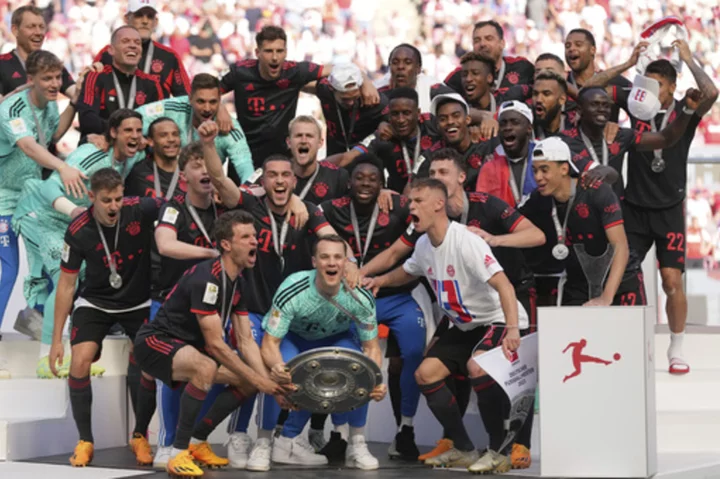
Netherlands' De Ligt ruled out of Nations League final four because of calf injury
The Netherlands will be without Matthijs de Ligt for the Nations League final four after the Bayern Munich center-back sustained a calf injury
2023-06-12 18:52
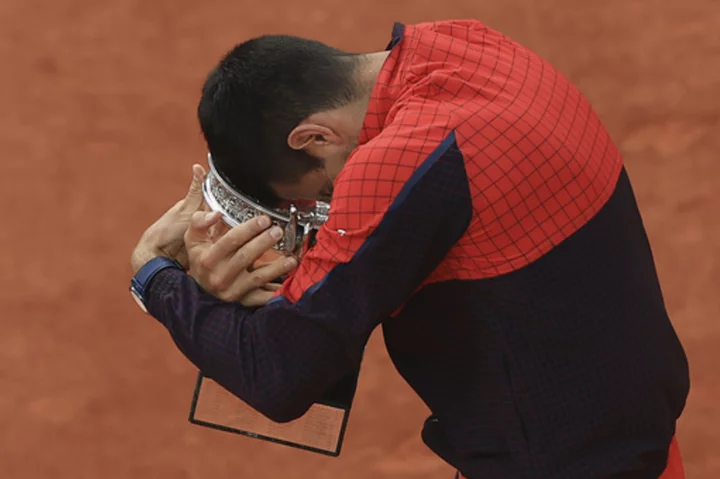
Analysis: Novak Djokovic has 23 Slams, so is he the ‘GOAT’? He leaves that debate to others
Novak Djokovic's 23 Grand Slam titles put him atop the list for the most in history by a man
2023-06-12 18:47
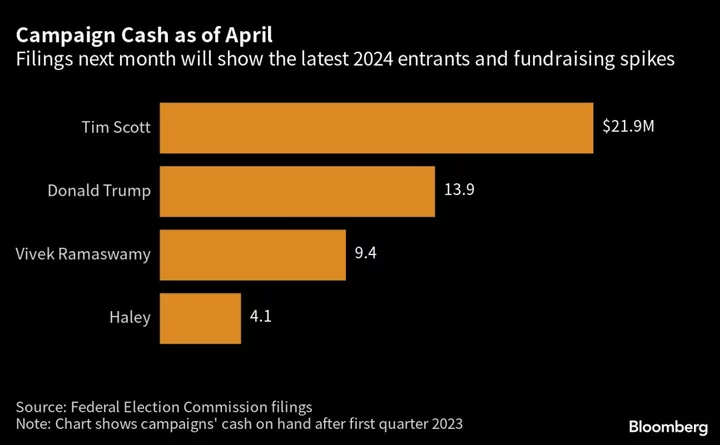
Trump’s 2024 Rivals Woo Billionaires to Counter His Loyal Donors
Republican presidential candidates face a crucial, early test next month of whether they can raise enough money to
2023-06-12 18:29
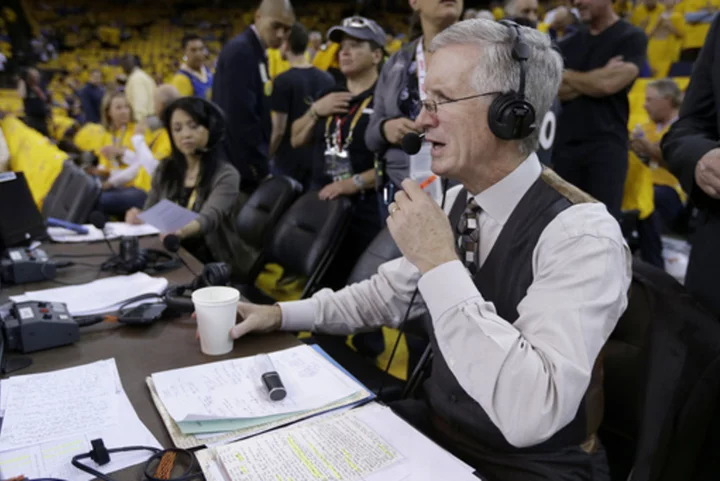
Bang! ABC/ESPN's Breen enters rarified air in Game 5 of NBA Finals with 100th broadcast
Mike Breen is currently the dean of television announcers for the NBA Finals and he is about to enter rarified air space
2023-06-12 18:26
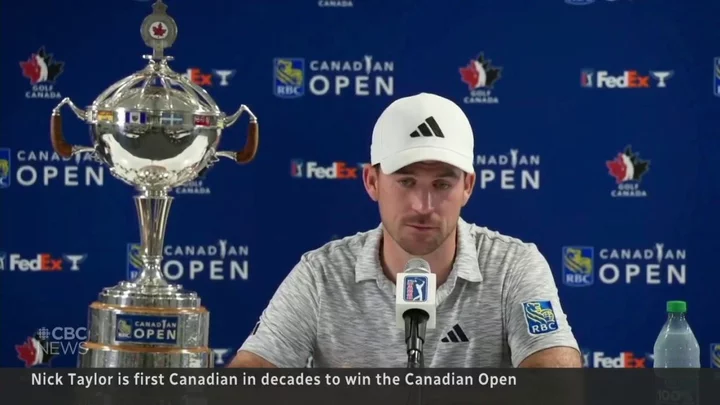
Professional golfer floored by security after being mistaken for fan
A professional golfer was tackled to the ground by a security guard after being mistaken for an overzealous fan at the Canadian Open on Sunday (June 11). Canadian Adam Hadwin was celebrating his fellow countryman Nick Taylor’s win after a tense play-off with Tommy Fleetwood. He approached Taylor with a bottle of champagne in viral footage circulating online. Hawdin, who is ranked 75th in the world rankings, was running over to Taylor after the win when he was bundled to the ground. A video was captured and shared by journalist Kayla Gray on Twitter and it’s already been seen by millions online. Sign up to our free Indy100 weekly newsletter After he was pushed to the ground a crowd gathered, before the misunderstanding appeared to be cleared up. It came after Taylor won the Canadian Open and secured the top prize of $1.62m. The incident has sparked a lot of reaction in the golf world, with Tyrell Hatton writing on Twitter: “Gutted for Tommy but what a way to win your national open! “Mad scenes! Praying for Adam Hadwin, what a tackle.” Hadwin’s wife Jessica also shared a hilarious update, commenting on a video by saying: “Omg I can’t handle these different angles. The security guard’s laser focus on his target. Adam’s commitment to the giant bottle of champagne. So many things to take in with every new POV.” She later added: “Sorry to leave y’all hanging, had to get the toddler ready for bed. I’m thrilled to report that @ahadwingolf is still among the land of the living and in true Canadian form, apologized to the security guard for being tackled.” “Im also gonna need that video of Hadwin being tackled by a security guard,” Justin Thomas wrote. Have your say in our news democracy. Click the upvote icon at the top of the page to help raise this article through the indy100 rankings.
2023-06-12 18:18
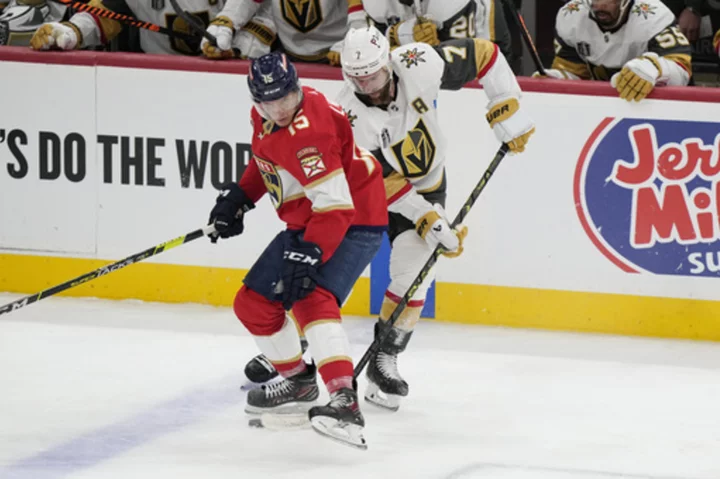
Vegas Golden Knights buck trend of small D-men during Stanley Cup Final run
The Vegas Golden Knights are one win from the Stanley Cup with a big defensive corps that bucks the trend of smaller blue lines
2023-06-12 18:17
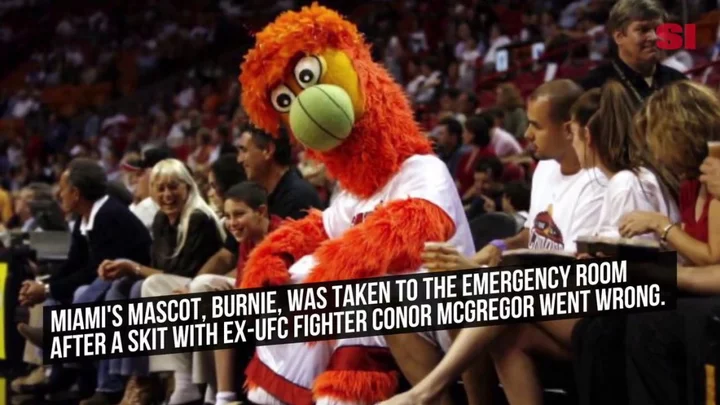
Miami Heat mascot hospitalised after Conor McGregor punch at NBA Final
Conor McGregor sent the Miami Heat mascot to the hospital in a bizarre promotional shoot gone wrong. The former UFC champion made an appearance at the NBA Finals in Miami where the Heat took on the Denver Nuggets. During the third-quarter stoppage, McGregor went head-to-head with the Heat mascot to promote his new product, a pain relief spray. The footage saw the fighter punch the mascot, before hitting him again. McGregor then used the heat spray on Bernie the mascot while he was knocked out on the floor, and who didn't get up immediately. The man behind the mascot was taken to a nearby hospital, according to The Athletic. The Heat said on Saturday (10 June) that the mascot received pain relief and rested at home. Sign up for our free Indy100 weekly newsletter The footage soon went viral across social media, with many concerned for the man's well-being. "I don't see the humor in this at all," one Twitter user wrote. "Looked like assault to me." Another added: "I really hope that the performer is okay, there’s no real way to brace your neck in costumes like that. Wouldn’t be shocked if they had a concussion." Meanwhile, one sports fan wrote: "Adding insult to injury, this is more entertaining than the actual NBA finals." Dana White has since responded to the incident, saying: "What’s up with mascots wanting to get punched in the face by professional fighters? What do you expect? "What are those mascot things made out of? Unless you’re like the Golden Knights mascot... I’m assuming it’s a metal helmet... I wouldn’t have professional fighters punch me in the face if I was a mascot." He added: "It doesn’t seem like the brightest thing in the world." McGregor hasn't fought professionally since July 2021, after suffering a leg injury to Dustin Poirier. His last fighting victory came in January 2020. Have your say in our news democracy. Click the upvote icon at the top of the page to help raise this article through the indy100 rankings.
2023-06-12 17:58
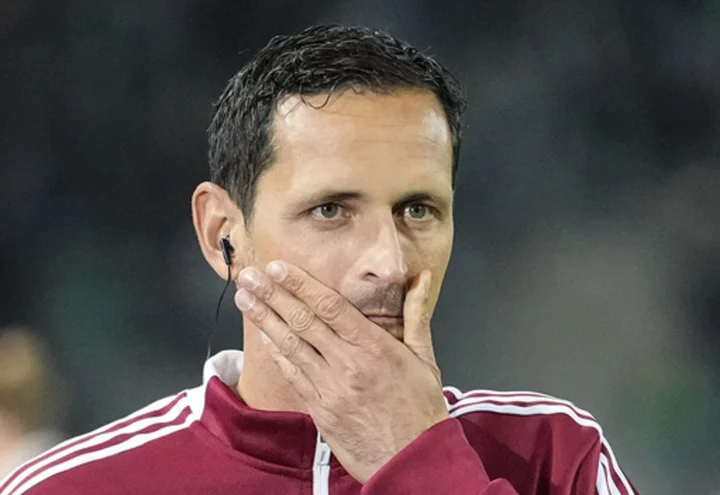
Frankfurt hires former Bayern Munich assistant Dino Toppmöller as new coach
Eintracht Frankfurt has appointed former Bayern Munich assistant coach Dino Toppmöller as head coach to replace Oliver Glasner
2023-06-12 17:50
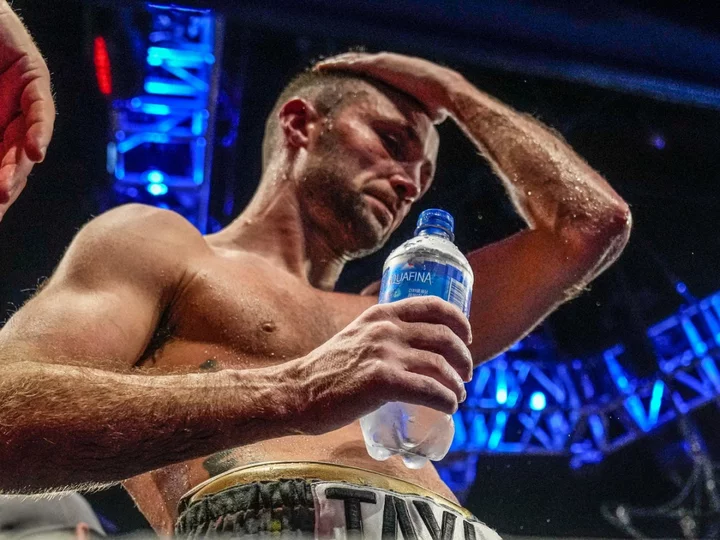
Josh Taylor plunged into the unknown as Teofimo Lopez earns redemptive win
It was a bad night for Josh Taylor in the Garden ring in New York City on Saturday. Taylor was beaten by Teofimo Lopez over 12 rounds in a shock. It was certainly not the fight that Taylor expected. Taylor suffered defeat for the first time in 20 fights, he lost his one remaining world championship belt and at the end he offered no excuses. “The better man won,” he managed, his voice crackling with emotions. Taylor was putting on a brave face to mask the despair. It had been a fiery and ugly build-up and Lopez had talked of killing Taylor in the ring. Lopez, who has his own personal battles away from the ring, apologised for the comment and received a peck on the cheek for his honesty. “It’s all song and dance,” Taylor told him. It was an oddly respectful end to a week of promises, insults and stupid claims. It was also glorious redemption for Lopez, once the No 1 at lightweight. Lopez had lost his way on both sides of the ropes, and finished his last fight asking his team live on air if he still “had it”? It was a difficult interview to watch; on Saturday in the ring in the Garden’s basement theatre, Lopez rediscovered the form most people thought had vanished. He is still only 25, by the way. It was a close fight that Lopez won clearly and that often happens when two very good boxers meet. One judge, Benoit Roussel, scored it wide in Lopez’s favour. His 9-3 verdict was too wide, to be honest. The other two judges, Steve Gray and Joseph Pasquale, returned identical scores of 115-113, which means 7-5 in rounds in Lopez’s favour. Taylor never complained, but had he won the last round, he would have retained his title with a majority drawn verdict. Instead, Taylor had to surrender his beloved world championship belt; last year, Taylor held all four belts at super-lightweight before slowly losing the struggle to keep the quartet of baubles in a protracted series of skirmishes with the sanctioning bodies. Taylor has not fought since February of last year and had been placed under relentless pressure to carry out his mandatory requirements. He surrendered, under threat of being stripped, three belts and was left with just the WBO; he was still considered the best at his weight. Taylor, incidentally, had won all four belts in a series of fights against six men with a combined record of 133 wins and not one loss. Taylor was, make no mistake, the best in the world at his weight. That changed in the Garden ring. Lopez was too mobile, too slick and Taylor was just off the pace. It is not a tricky fight to understand; Lopez just worked that bit harder. Taylor had talked before about moving away from the 140-pound limit of super-lightweight and going to welterweight. In New York late on Saturday, there was also talk of a rematch. Taylor will let the loss settle and then make a decision, but hopefully he will not take another sixteen-month break. On the same night, it was the Sunny Edwards show at Wembley Arena and he retained his IBF flyweight title for the fourth time. On his undercard, Nina Hughes retained her WBA bantamweight title over 10 rounds against Katie Healy and in the bloody fight of the night, Ellie Scotney won the IBF super-bantamweight title. Scotney, having just her seventh fight, was too smart, tough and determined for New Zealand’s Cherneka Sugar Johnson. There was a dark and deep cut by Johnson’s right eye for most of the blood-splattered fight. Scotney was quite brilliant, Johnson’s five MÄori-haka men stole the show with their routine before she walked to the ring. It was her highlight, they were exceptional. Edwards was a clear winner of nine of the 12 rounds, but the Chilean, Andres Campos, kept it competitive. “I need tests,” Edwards admitted. And he does and the tests might start later this year. And I hope so - Edwards has the style, craft and personality to be a big attraction. Edwards has a deal with his new promoter, Eddie Hearn, for the big fights; there are three other world champions at flyweight, but Edwards wants Jesse “Bam” Rodriguez – the WBO flyweight champion and a genuine threat. Rodriguez is unbeaten in 18, just 23, the former world champion at super-flyweight and, according to heavy rumour, he wants our Sunny. As a twist - and it is a good one - Sunny has signed and agreed to the fight, which includes the money terms, with Rodriguez as part of his deal with Hearn. Rodriguez can be enticed over for a December showdown. That, by the way, is a super fight. Edwards won clearly, Hughes did the same, Scotney’s win was hard but clear and in New York, in the basement theatre at the Garden once evocatively known as the Felt Forum, Taylor was left wondering what went wrong. There were no excuses, but there will be some questions. Read More Teofimo Lopez hands Josh Taylor his first defeat with decision win in New York Josh Taylor says move up to welterweight is ‘imminent’ after first career defeat Miami Heat mascot hospitalised after Conor McGregor punch Josh Taylor says move up to welterweight is ‘imminent’ after first career defeat Teofimo Lopez hands Josh Taylor his first defeat with decision win in New York Who is fighting on Josh Taylor vs Teofimo Lopez undercard tonight?
2023-06-12 17:47
